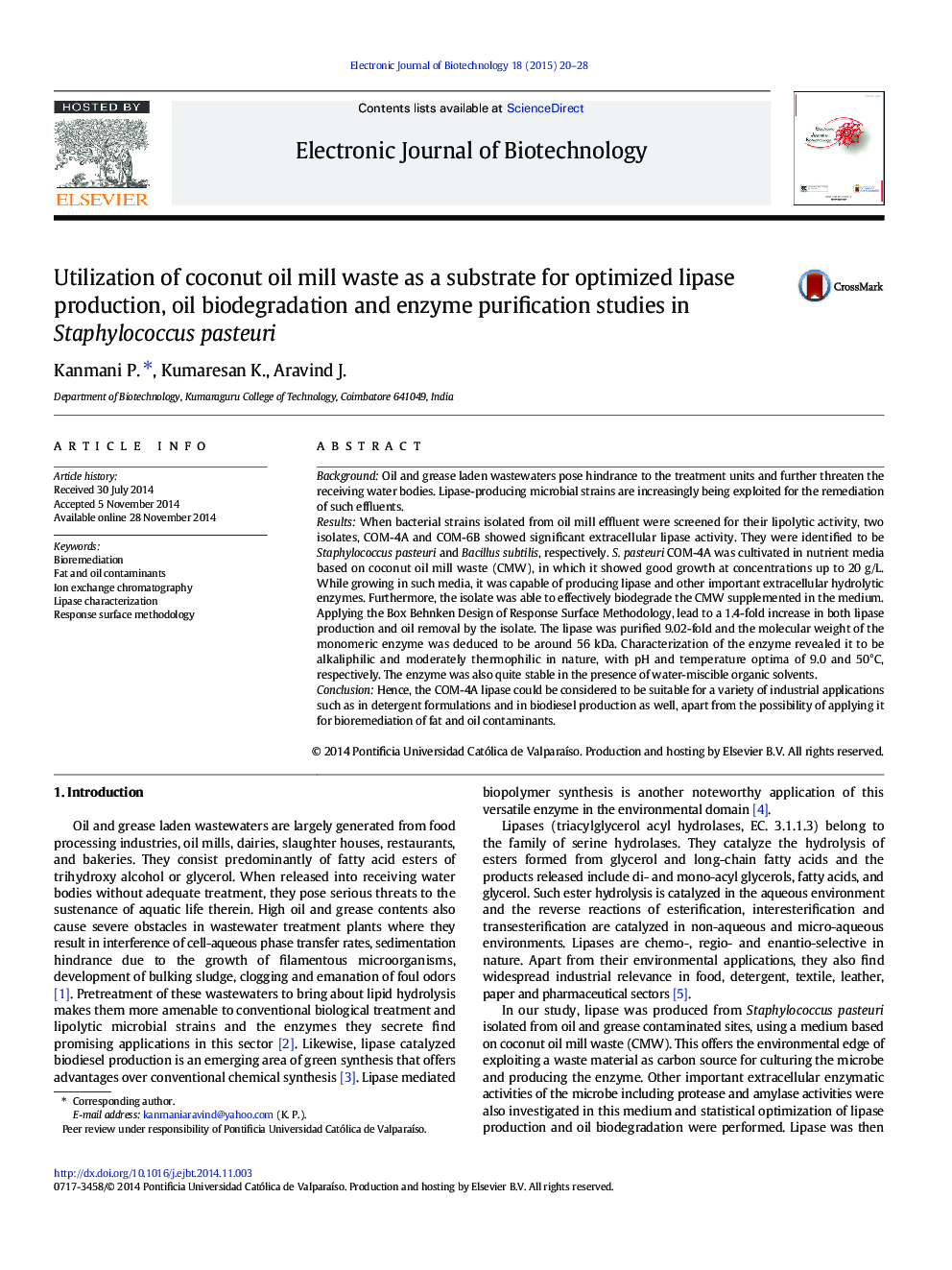| Article ID | Journal | Published Year | Pages | File Type |
|---|---|---|---|---|
| 200645 | Electronic Journal of Biotechnology | 2015 | 9 Pages |
BackgroundOil and grease laden wastewaters pose hindrance to the treatment units and further threaten the receiving water bodies. Lipase-producing microbial strains are increasingly being exploited for the remediation of such effluents.ResultsWhen bacterial strains isolated from oil mill effluent were screened for their lipolytic activity, two isolates, COM-4A and COM-6B showed significant extracellular lipase activity. They were identified to be Staphylococcus pasteuri and Bacillus subtilis, respectively. S. pasteuri COM-4A was cultivated in nutrient media based on coconut oil mill waste (CMW), in which it showed good growth at concentrations up to 20 g/L. While growing in such media, it was capable of producing lipase and other important extracellular hydrolytic enzymes. Furthermore, the isolate was able to effectively biodegrade the CMW supplemented in the medium. Applying the Box Behnken Design of Response Surface Methodology, lead to a 1.4-fold increase in both lipase production and oil removal by the isolate. The lipase was purified 9.02-fold and the molecular weight of the monomeric enzyme was deduced to be around 56 kDa. Characterization of the enzyme revealed it to be alkaliphilic and moderately thermophilic in nature, with pH and temperature optima of 9.0 and 50°C, respectively. The enzyme was also quite stable in the presence of water-miscible organic solvents.ConclusionHence, the COM-4A lipase could be considered to be suitable for a variety of industrial applications such as in detergent formulations and in biodiesel production as well, apart from the possibility of applying it for bioremediation of fat and oil contaminants.
